There are decades when nothing happens, and weeks where decades happen
By Tad Rivelle, TCW

Let’s begin at the beginning: the pandemic was – and remains – a shock, a catalyst. But recessions are not so much shortfalls in demand, as they are transformations of demand. And, since producers are continually dancing to the tune of demand side realities, businesses re-position and re-size accordingly. But since capital and labor does not reposition on a dime, frictions result. It takes time for producers to figure out what their new markets might be and what the earnings power of theirs, and others, assets will be. Unemployment is the inevitable result. True, the massive spike in the “temporarily” out of work category has fallen in sync with the hope of the V-shaped crowd. Yet, more ominously, many companies are beginning to confront the changed realities of their businesses, and this is forcing an expansion in the ranks of those permanently unemployed:
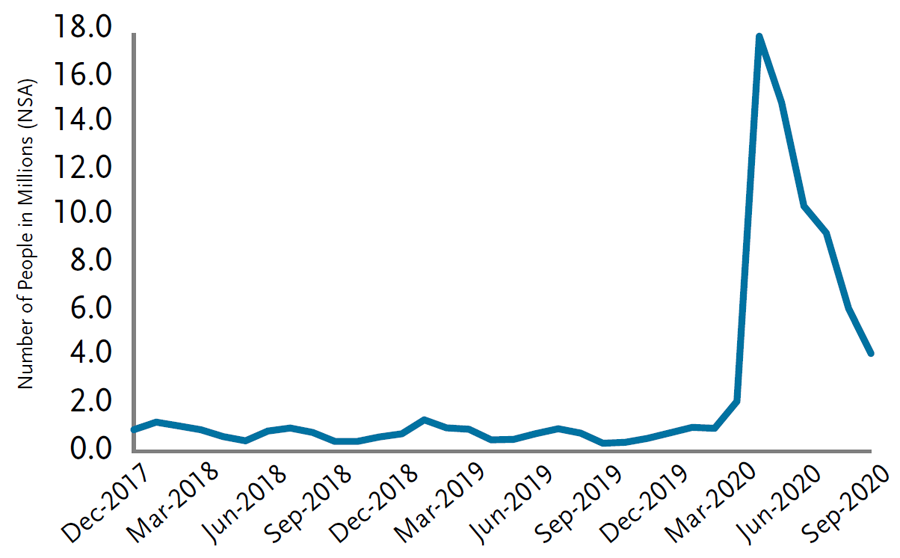
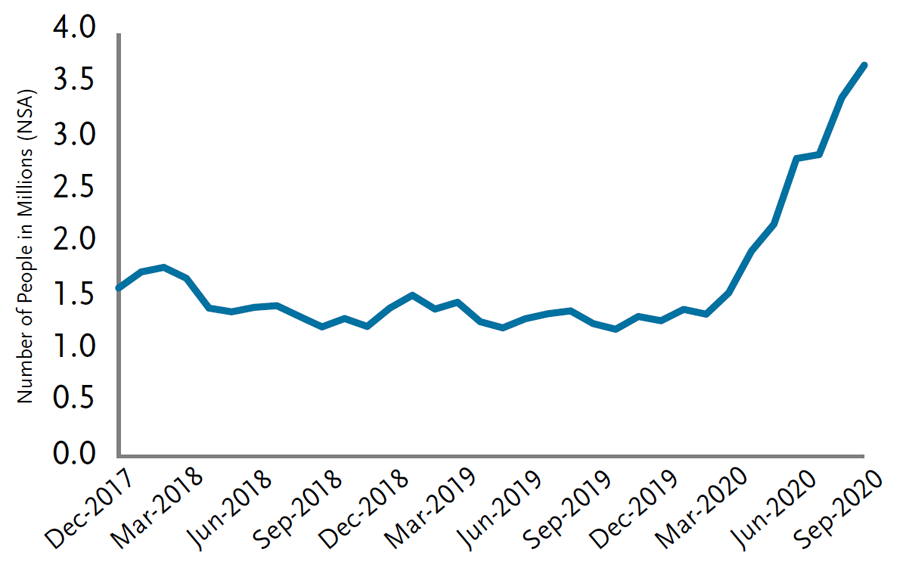
Source: Bureau of Labor Statistics, Bloomberg, TCW
As we all recognize, the pain of the economic adjustment has disproportionately fallen on the industries in the eye of the social distancing storm:

Source: Bureau of Labor Statistics, TCW
Yet, if recessions are periods of transformation, there can be no going back to the pre-COVID economy. But what then will take its place? While it is perhaps just a bit glib to say it this way, I believe we are witnessing the birth of the economy of 2030 before our very eyes. Businesses that blithely, and perhaps habitually assumed that professional office work meant retaining the physical layouts of say the past two decades have been woken from their slumber. Perhaps the writing has been on the wall for some time already: after all, such itinerant professional workers as management consultants have lived and worked on the road for years, demonstrating that headquarters can be more of a hub and less of a second home. Now, how many tech, finance, legal, accounting, public relations, and advertising workers may follow in their wake? Surely not 100%. And surely not none. On this subject as in so many issues of our day, arguments on both sides abound while the future facts remain unformed and in dispute.
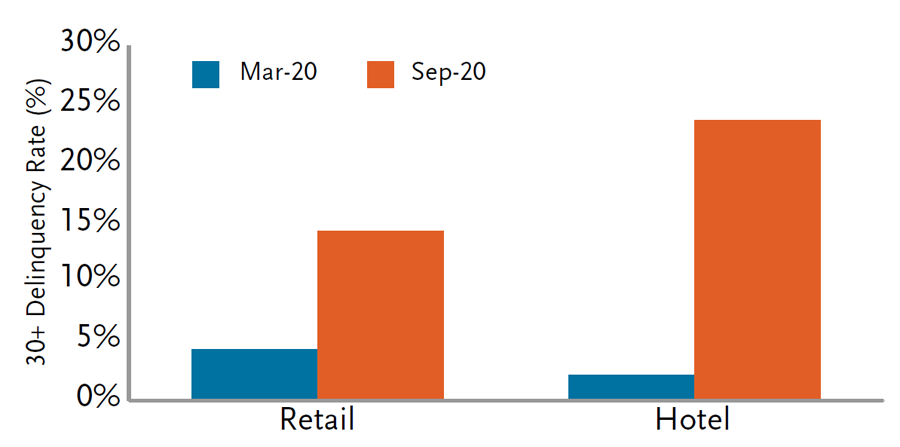
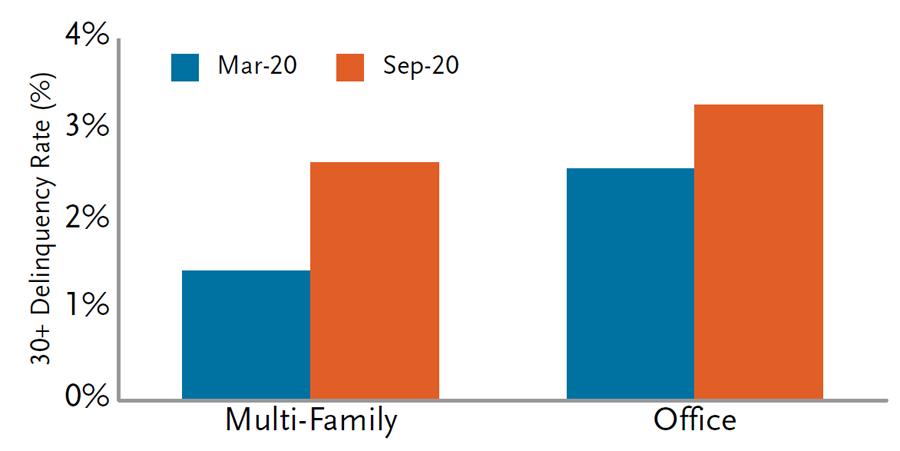
Source: Bank of America, TCW
John Lennon famously sang that life is what happens when you’re busy making other plans. While governments plan their next stimulus and executives update their strategic plans, the grass root choices of employees, consumers, and competitors will largely determine how the next decade’s worth of changes take place over the next 12-months.
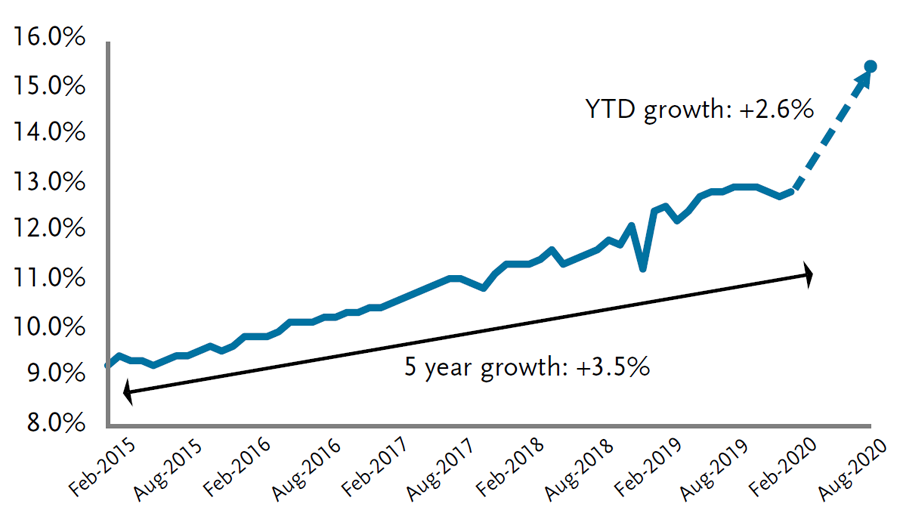
Source: Census Bureau, Bloomberg, TCW
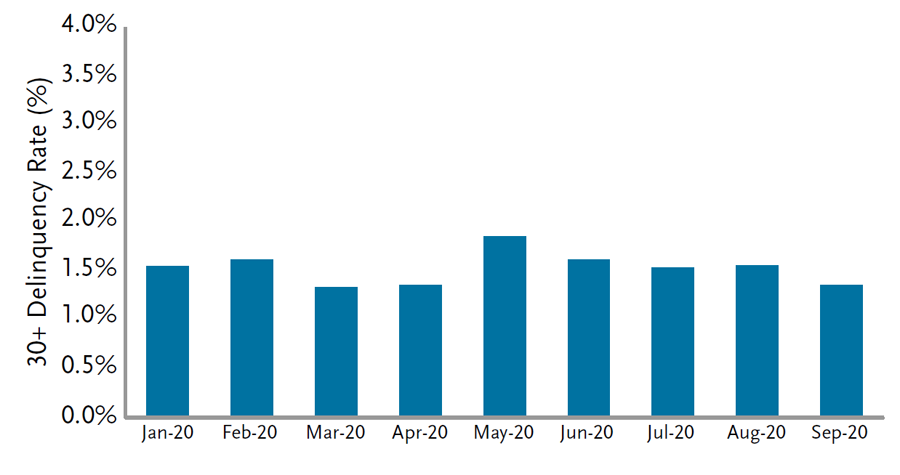
Source: Bank of America, TCW
These choices are very much evident in the growth of e-commerce (where roughly what had been one years’ worth of penetration is happening every month), in the rising delinquencies of CRE loans, and in the apparent migration out of the hip and high growth urban centers to the placid and more affordable suburbs.
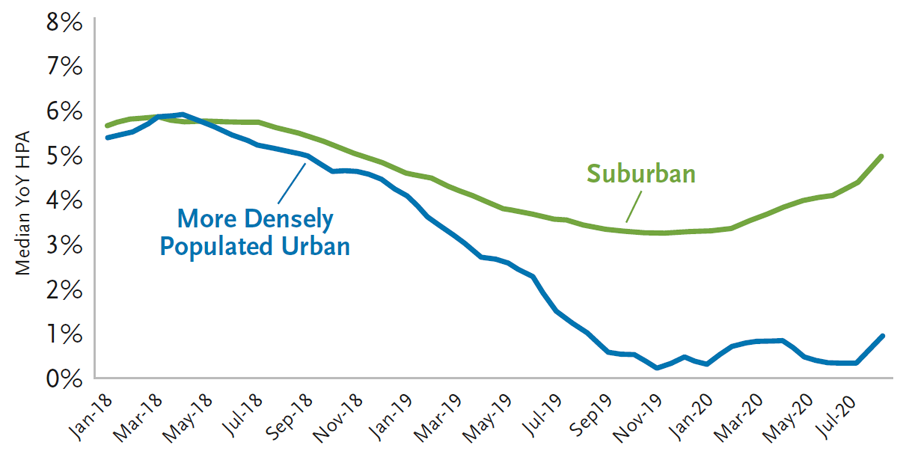
Source: Zillow, Dpt. of Defense, U.S. Census Bureau, Morgan Stanley
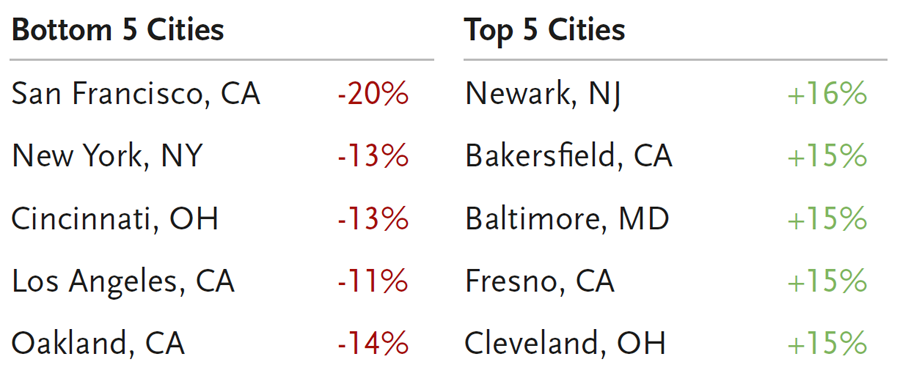
Source: Zumper National Rent Report
Historically, with every recession, this question emerges: what will we do with all the production facilities that are no longer needed and with all the workers who once worked there? In the ’70s, it was aerospace. In 1982, the plight of the steel industry was front and center. In 1990, it was S&Ls and the many white elephants they financed. Whatever the challenge, human ingenuity eventually works out a solution that gives rise to a better, if initially unfamiliar future. While it is still too early to call out what that future will be, we share the following observations and conclusions from the capital markets:
- Massive and continuing stimulus cannot be sustained without ultimately severe and unpalatable consequences.
- The Fed will, nonetheless, suppress rates – especially front end rates – and volatility with all its might.
- The ongoing economic transformation serves to make many assets obsolete and to devalue the debt held against those assets.
- COVID is the catalyst, but the changes set in motion will prove to outlast the pandemic. As such a full V-shaped recovery is a dubious proposition.
Strategically, this suggests a fixed-income investment strategy that is supported by these pillars:
- Risk based assets, such as credit, that have largely returned to pre-COVID pricing levels should be downsized.
- Agency mortgage assets that benefit from the Fed’s big bear hug should be embraced as a means to add yield and carry.
- Non-agency mortgages will continue to provide idiosyncratic opportunities, in both the non-QM as well as legacy space.
- Value destruction in CRE and CMBS has yet to be realized. The “fat” pitches will be coming, but probably not until banks inevitably initiate a round of foreclosures.
- Maintain liquidity as a means to opportunistically invest when surprises inevitably happen during this time of opacity.
Publication – TCW – October, 2020 (EN)
Publication – Allnews – October 29, 2020 (FR)
Prosper News
Découvrez les derniers commentaires et analyses des gérants des fonds
Prosper Stars & Stripes in the news – December 2023
SMid US: should I stay or should I go now? December 15th, 2023After the Covid years and the cycle of rising US interest rates, it's time to consider the outlook for the US Small & Mid Caps (SMid US) segment, and how to best invest in it. [...] READ MORE (FR)...
Prosper Global Macro – 2024 Manager Outlook
PLURIMI 2024 OUTLOOK Patrick Armstrong published his macro review of 2023 and outlook for 2024. Below is a summary of the PLURIMI - 2024 Perspective report (November 22nd, 2023).2023 REVIEW - Central banks continued to tighten and bond yields rose more than...
Prosper Stars & Stripes – Market Review Q3 2023
Prosper Stars & Stripes : Review Q3 2023 by Christopher Hillary, Roubaix Capital's CEO and Fund Manager. During the third quarter of 2023, Prosper Stars & Stripes lost 2.0% outperforming the Small and Mid caps market which lost 5.1%. Christopher Hillary...


 Retour
Retour 







